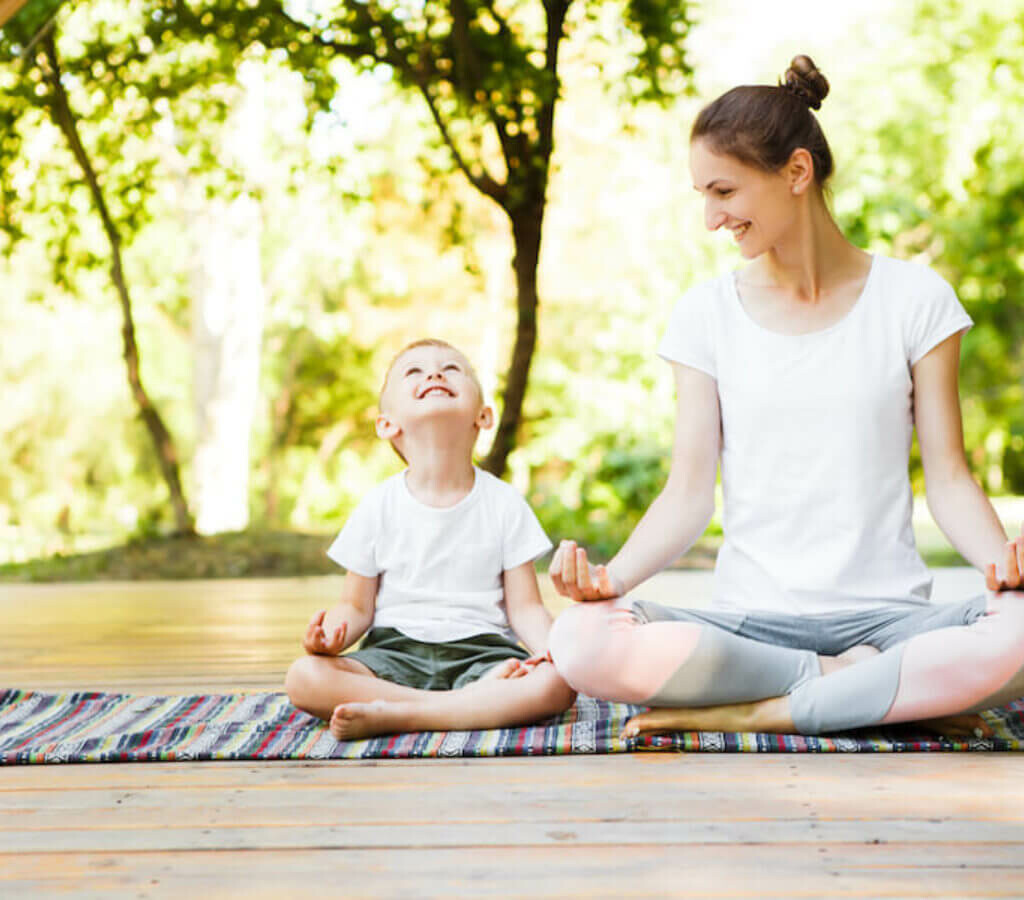In a world overwhelmed by stress and distractions, meditation emerges as a beacon of serenity and balance. This ancient practice, renowned for its benefits in adults, is proving to be a powerful tool in the holistic development of children.
Simple Steps to Introduce Children to Meditation
Incorporating meditation into children’s routines is not only beneficial but also an exciting journey towards self-awareness and emotional self-regulation.
Starting young ones on this path can be as simple as dedicating a few moments each day to silence, encouraging an environment of calm and focus. Comfortable clothing is recommended, and while some prefer to include soft background music, for many, silence creates the perfect setting for inner connection.
When introducing meditation to children, it’s crucial to tailor the practice to their level of understanding and attention span. An effective method involves guiding them through simple and positive visualizations.
For instance, imagining a light or a shining star that symbolizes peace and calm, and visualizing this light illuminating and soothing every part of their being, from head to toe. These techniques not only help children focus and calm down but also stimulate their creativity and teach them to foster feelings of love and gratitude towards themselves and others.
Regular practice of these meditative exercises significantly contributes to children’s emotional and cognitive development. It equips them with tools to manage their emotions, enhances their concentration, and improves their academic performance.
Moreover, for children facing particular challenges, such as attention issues or behavioral difficulties, meditation becomes a safe haven where they can find calm and clarity.
Visualization and Calm: Meditation Exercises for Children
A meditation session with children can start with the invitation to close their eyes and breathe deeply, creating a space of stillness and receptivity. Guiding them to imagine a bright star of white light, symbolizing purity, peace, and love, can be a charming starting point.
They are encouraged to personalize this star with colors that resonate with their emotional state, allowing them to connect more deeply with the experience.
As the imagined star’s light gently descends upon them, filling them with tranquility and joy, children learn to visualize love and warmth enveloping every part of their body. This process not only fosters relaxation but also promotes a sense of well-being and internal security.
Incorporating the Guardian Angel figure into meditation introduces an element of divine protection and companionship, reinforcing the idea that they are not alone in their personal growth journey.
Imagining this angel leading them to a garden where they can leave their worries and fears behind offers a powerful metaphor for emotional release and the discovery of inner and outer beauty.
This practice not only enriches children’s imagination but also teaches them about the importance of creating spaces of peace and love in their lives. Through these visualizations, they learn to cultivate feelings of compassion and empathy towards themselves and others, laying the groundwork for healthy relationships and a more harmonious community.
Towards a Peaceful Future: Meditation as a Child Development Tool
Meditation, far from being just a relaxation technique, emerges as a transformative tool in children’s lives, opening doors to a world of tranquility, focus, and emotional balance.
By teaching them to meditate, we’re not just equipping them to handle everyday challenges with more serenity; we’re also giving them the keys to unlock their inner potential, fostering holistic development that encompasses both psychological well-being and academic performance.
The practice of meditation in childhood lays the foundation for a more conscious, fulfilled, and harmonious adult life. By learning to channel their emotions and thoughts in a positive way, children gain valuable lifelong skills, such as empathy, gratitude, and self-acceptance.
These skills not only contribute to their personal growth but also have the power to positively influence their surroundings, promoting a culture of peace and mutual respect.
In this journey of discovery and growth, meditation reveals itself as an invaluable ally, offering children a haven of calm and security in an often turbulent world.
By integrating these practices into their daily lives, children not only improve their immediate well-being but also sow the seeds for a brighter and more harmonious future, both for themselves and for future generations.





